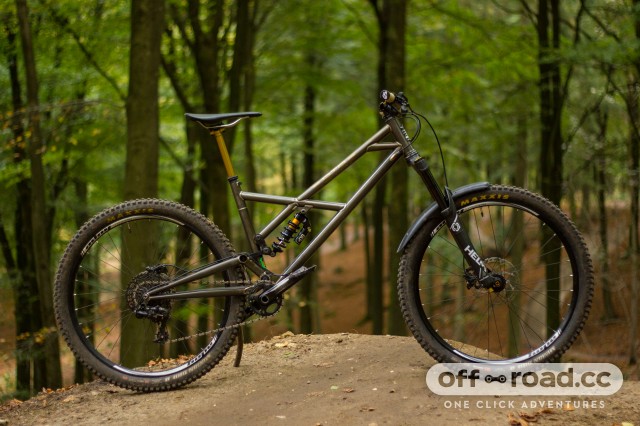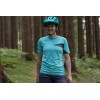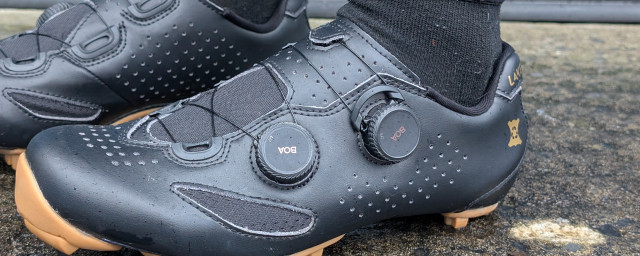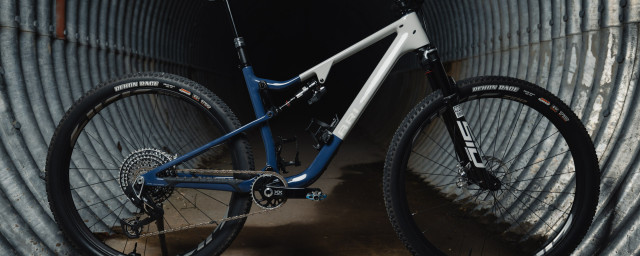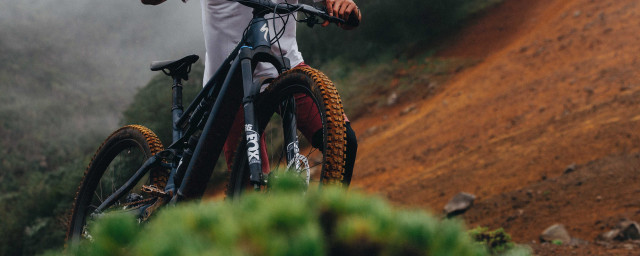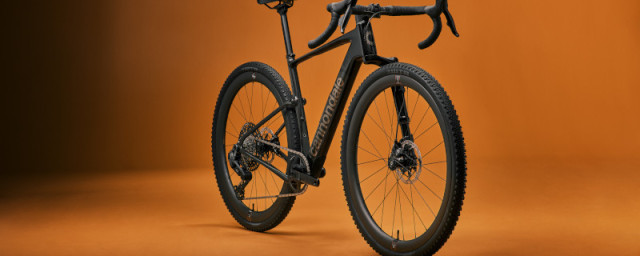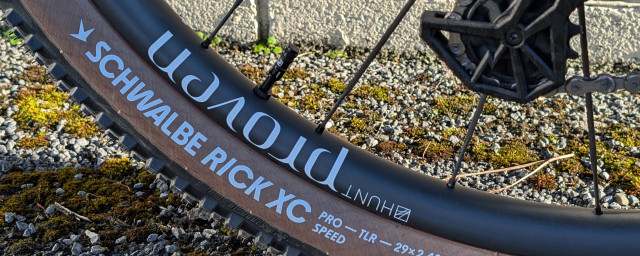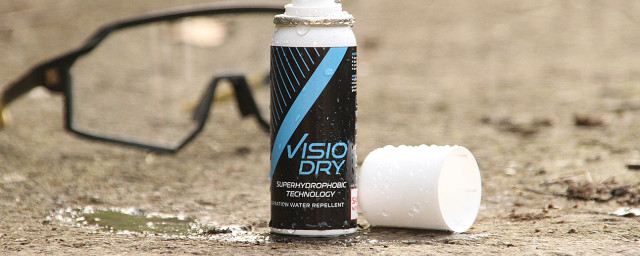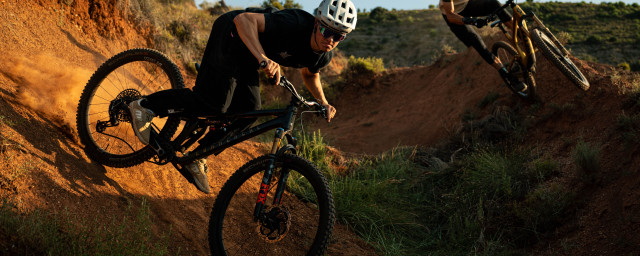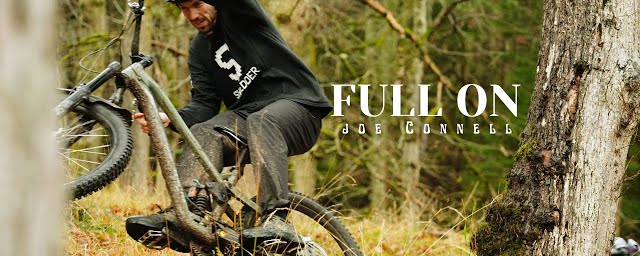Keeping it real - the BTR Fabrications story

You’ve probably heard of BTR Fabrications but you’d be forgiven for not knowing much about them. BTR is the brainchild of two guys with a passion for building progressive steel bikes. We wanted to know more about this interesting team so we headed to their Somerset HQ for a chat.
- Feature - Are e-bikes a great leveller?
- First Ride: BTR Fabrications Pinner - hardcore steel full suspension
Frome, just south of Bath, may not be the first place you’d think to base a bike company but that’s just where BTR Fabrications are. They are in good company though, tucked into a corner in an old vinegar factory next to The Bicycle Academy. The place is a frame building powerhouse. Cocooned in a space about three bike lengths by two, Paul Burford and Tam Hamilton (the ‘B’ and the ‘T’ in Burf and Tam Racing) are surrounded by a range of jigs and equipment that enable these two minds to come together and turn out truly stunning steel frames including the enduro minded Ranger, the gravity chasing Belter and their all-round full susser, the Pinner.
My visit to BTR HQ was organised with an interest in the new Pinner, which we took out for a first ride. Stepping through the doors of the workshop and over the resident sleeping dog (every good workshop has one of those, right?) there was a brand new Pinner in the making. Marvelling at the clean lines and buttery smooth welds of the front end, I also got to handle a completed rear end.
The swingarm would be present in every steel lovers dreams, an intricate thing of beauty, the neat symmetrical shapes are pleasing to those with any OCD tenancies, with the curved bearing housings joining the steel tubes fluidly with a certain industrial purposefulness. Burf is the chief fabricator at BTR and says the swing arm is his favourite part of the Pinner.
“It's hard to envisage just how much work goes into it, and there are some really tight spots that need to be welded. Once it's out the jig and finished, and you can hold it in your hands and have a look at all the intricacies it's pretty awesome. Plus, it's so stiff, almost solid. It has to come out of the jig dead straight because there is no moving it if it has any misalignments.”
I’m jumping well ahead of the proverbial gun here though, a lot have things have happened prior to the Pinner - a lot of dreams dreamt, experiences had and man-hours worked, all fuelled by a pure love for bikes before getting to this point. It's a place where the company now has a range of bikes on offer, a strong sense of identity and yet more exciting projects in the future.
Tam and Burf’s journey began at university, Oxford Brookes and a couple of Motorsport degrees to be exact, a degree Tam says is “...very similar to automotive engineering, but maybe just a bit more fun.” After their uni days, Tam began work at bike company, K-9 Industries as a design engineer and Burf worked as a fabricator.
A couple of years down the line, Tam says he was restless and wanted a new challenge. One phone call later to Burf and the groundings for BTR were put in place. Both with backgrounds in being ‘handy’ for want of a better word, the pair made an ideal match in the bespoke frame building world.
Tam: “We'd both been brought up making things, fixing cars - and lawnmowers in my case - and generally getting the hang of creating things or fixing things without instructions. If you look around our workshop now you'll see plenty of gnarly tools that we've built from scratch to build our bikes - our [tube] notcher is a prime example. Being able to build anything comes in pretty handy when it comes to building bikes!”
With the unidentifiable tools dotted around the workshop, BTR Fabrications appears a methodical place to work, with no task insurmountable between Tam’s design skills and Burf’s adept fabricating hands. Where there's a will, there's a way. During his time at K-9 Tam dealt with the mechanical design of all products from coil spring thrust bearings and offset headsets to bike frames, stems and handlebars. Like a sponge, Tam soaked up all he could about bike geometry and suspension, arming himself with the knowledge needed to handle the design of complete products.
Breaking away from K-9 and with Burf alongside, they forged the path for BTR Fabrications. Tam knew they both wanted the freedom to chase their own ideas, saying “We didn’t want to have to conform to anything or anybody. Obviously, in a company of two I don't have total freedom with designs, but it's pretty good and I certainly can't do it all on my own!”
Whilst neither are precious about steel, Tam recognised that good grades of steel are excellent materials for bike frames. He admits, as with any material, steel has its strengths and weaknesses, the ride quality being just one of those strengths. Steel bikes always have a slightly retro feel about them, no doubt something that their fans love. Certainly speaking from my own experience it’s a look that’s easy to fall in love with too. Tam said his early inspiration was taken from legendary brands such as Brooklyn Machine Works and Curtis, saying he never felt using steel was backwards or questionable.
In fact Tam told me using steel for hardtail bikes is relatively simple, with BTR using tubes from the likes of Reynolds, Dedacciai and Columbus enabling them to produce the geometry, durability and weight that they require without going to extraordinary lengths and using only a few custom made tubes here and there. Beginning with steel hardtails, Tam and Burf initially wanted to design a bike that they themselves wanted to ride, both lovers of downhill they identified that the geometry of hardtails had stagnated for a number of years and putting their money where their mouths are, they sought to change this, Tam proudly saying: “We're seeing a strong resurgence of the hardtail now, and are pretty proud to have been at the sharp end of it!”
A full suspension bike was always on the cards, but initially the guys wanted a longer and slacker hardtail capable of being thrown down the roughest of downhill tracks - enter the Belter - but they also knew that short travel bikes with aggressive geometry were becoming increasingly popular and wanted to be at the pointy end of the stick, ready with a super capable and desirable bike.
The plans all began in 2013, but what of the design brief? Tam explains: “The motivation for the Pinner was to create a durable, aggressive, short travel full suspension frame. This is what we think is most important in a bike to make it fun, fast, versatile, and reliable. Fun, fast, versatile and reliable, in our eyes, are what make a good bike to own.”
Another bike unashamedly built for themselves, the Pinner is the pinnacle of what a bike should be in Tam and Burf’s eyes, a pair of everyday rider and racers yet both able to throw a shape or two on a bike. It’s a little downhill biased, the 64-degree head angle makes no bones about that, but alongside a 76-degree seat angle, the Pinner has the credentials to escort you back up the hill again for round two with no complaints. It’s a versatile bike to be ridden anywhere you please and Tam says, it's meant to be riot wherever you go.
I was intrigued as to just where the hell you start with designing a bike like the Pinner, many times I’ve envisaged the end product of my creations only to be bitterly disappointed, albeit my creations lie specifically in the cake department.
Apparently, as Tam tells me it’s not all that hard though, with two engineering brains powering away a bike such as the Pinner is always destined to be a success: “The build begins in the same as our other bikes really, but with a lot more analysis in the mix due to the rear suspension. We start with the idea of what we want the bike to do and feel like, and work from there. Mountain bike geometry is largely about controlling weight distribution, so you can fairly quickly start to home in on what the geometry needs to be. Suspension adds a layer of iteration into the mix really, since you need to consider the geometry in various scenarios.”
Inevitably, there are some bumps in the road. Steel is more problematic when used to build a full suspension bike as keeping good strength and stiffness while hitting weight targets as well as achieving excellent suspension performance is challenging. Problems come in all shapes and sizes too – from ensuring the whole package of geometry and suspension work in unison and it is all specific to that original brief, as well as making sure each material is used efficiently, a fact made more difficult by a low-volume manufacturer.
Tam: “There are a lot of parts in a Pinner which require precise fabrication. If any stage of the build isn't up to scratch the result will be a frame that doesn't fit together or doesn't hold together. In aluminium or carbon fibre, particularly in a high-volume manufacture environment, large, detailed and accurate parts would be made as machined or forged (or) monocoque items. Those processes aren't feasible for us, so we lean on our fabrication skills to achieve our goal. Just so happens that there are advantages in that though, since we can use specific grades and forms of steel where the properties of each can be specifically tailored to the demands of that component.”
It’s clear that the same tenacious attitude is applied to the performance factors of the bike. Nothing is ignored and imperfections are not accepted. With a lifetime love of riding bikes and the attention to detail that is so apparent in this workshop, it goes without saying that this is a project that has had the utmost attention paid to every single detail and one that has been made with the very best of craftsmanship.
It doesn’t stop with the Pinner though, far from feeling as if their job is done, Tam and Burf have plenty of bike shaped ideas up their sleeves, the list is long and bold. The guys plans cover a range of bases; unleashing a cyclocross frame on the world for one, two new secret hardtail projects, a Gasser replacement, a 29er Pinner...
You get the feeling the list is endless, certainly, the passion is.
On my day in the workshop, there were two Pinners in production, being prepared for their new homes. A cumulation of four years, or in fact a lifetime's work, these two are the first Pinners to be sold, off to homes where the riders hold the same values as Tam and Burf; a love of riding bikes fast and hard, a need for a unique, accomplished, reliable bike to take wherever gravity compels them to ride and an urge to own the bespoke bike of a lifetime.











